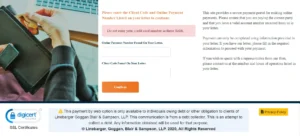Cryptocurrency fraud is rising at an alarming rate with scammers using increasingly clever tactics to steal digital assets. Coinbase, one of the world’s largest cryptocurrency exchanges, has become a primary target for these scams.
Fraudsters send fake text messages claiming to be from Coinbase about unauthorized withdrawals to create panic and trick users into giving away sensitive information. These text scams exploit human fear and urgency to bypass security measures.
This post examines Coinbase withdrawal text scams in detail, their operations, identifying signs, prevention methods, and recovery options.
Key Takeaways
- Coinbase withdrawal text scams use fake urgent messages about unauthorized withdrawals to trick users into calling fake support numbers
- Scammers create panic by claiming your assets are at risk, pushing you to act quickly without thinking
- Never share your passwords, recovery phrases, or verification codes with anyone, including people claiming to be from Coinbase
- Legitimate companies never request sensitive information via text messages or phone calls
- Coinbase never makes unsolicited phone calls to customers about account issues
- Verify all communications through official channels by directly contacting Coinbase through their website
- Enable two-factor authentication using an authenticator app instead of SMS for better security
- Report suspicious texts to Coinbase at security@coinbase.com and to your mobile carrier by forwarding to 7726 (SPAM)
- Recent reports show Coinbase users lost over $46 million to phishing scams in March 2025 alone
- Recovery scams target victims of initial crypto scams, promising to recover lost funds for an upfront fee
- Always check the sender’s phone number and look for grammatical errors or unusual urgency in messages
- Keep your software updated and use strong, unique passwords for cryptocurrency accounts
How Coinbase Withdrawal Text Scams Work
The typical Coinbase withdrawal text scam follows a predictable pattern designed to create fear and urgency. The scam starts when you receive a text message claiming to be from Coinbase. The message alerts you about an unauthorized withdrawal from your account. These texts often include a fake one-time password (OTP) code to make the message seem legitimate. The message urges you to call a phone number immediately if you did not authorize the transaction.
A real example of such a text looks like: “(COINBASE) The OTP code for your withdrawal is 736191. If this was not you please call us on +1 (877) 338-9228. Ref CB41900.” The inclusion of reference numbers and codes adds false authenticity to the message.
When you call the provided number, the scammer answers pretending to be a Coinbase support representative. They sound professional and may even verify your name, email, and phone number to gain your trust. This information is often obtained from data breaches or social media.
The fake support agent then claims they need to verify your identity to stop the unauthorized transaction. They ask for sensitive information like passwords, 2-factor authentication codes, or wallet recovery phrases. Some sophisticated scammers might even request remote access to your computer to “help secure your account.”
Once you provide this information, the scammer gains complete control of your Coinbase account. They quickly transfer your cryptocurrency to their wallets, making recovery nearly impossible due to the irreversible nature of crypto transactions.
Common Signs of Coinbase Text Scams
Identifying Coinbase text scams requires awareness of specific red flags. The first major indicator is the sender’s information. Legitimate Coinbase messages come from specific short code numbers, not random phone numbers. If you receive a text from an unknown number claiming to be Coinbase, this should immediately raise suspicion.
Another clear sign is urgency and fear tactics. Scammers rely on creating panic to cloud your judgment. Messages containing phrases like “immediate action required” or “account at risk” aim to push you into acting without thinking. The text might mention a large withdrawal amount to increase your anxiety.
Unusual timing is another red flag. Many scam texts arrive at odd hours when you might be tired or less alert, such as very early morning or late at night. A text arriving at 4 AM about your Coinbase account should trigger suspicion.
Grammar and spelling errors frequently appear in scam messages. While some sophisticated scammers have improved their language, many still contain awkward phrasing or minor mistakes that legitimate companies would avoid.
The request for personal information via text is always a sign of fraud. Coinbase and other legitimate financial services never ask for sensitive information like passwords or verification codes through text messages.
Unfamiliar phone numbers for customer service should also alert you. Coinbase has specific contact methods through their official website and app. Any phone number provided in a text message should be verified against official sources before calling.
Finally, made-up reference numbers often appear in these texts. Scammers include fake transaction IDs or reference codes to seem legitimate, but these don’t match Coinbase’s actual formatting for such information.
Recent Statistics on Coinbase Phishing Scams
The scale of Coinbase text scams has reached alarming levels in recent years. According to blockchain investigator ZachXBT, Coinbase users lost over $46 million to phishing scams in March 2025 alone. This represents a significant increase from previous periods, showing the growing sophistication of these attacks.
Individual losses can be devastating. In one reported case, a single victim lost approximately 400 Bitcoin in a sophisticated phishing attack. At current market rates, this represents a staggering financial blow to one person.
The frequency of these attacks has also increased. Multiple users report receiving such text messages weekly, indicating a wide-scale operation targeting Coinbase’s large user base. Social engineering tactics have become more refined, with scammers gathering personal information before making contact to appear more legitimate.
The success rate of these scams remains troublingly high despite awareness efforts. Many victims report that the scammers sounded completely professional and knowledgeable about Coinbase operations, making them difficult to distinguish from genuine support staff.
Geographic data shows these scams operate globally, with concentrations in regions with high cryptocurrency adoption rates. However, US-based Coinbase users appear to be targeted most frequently due to the company’s strong market presence in America.
Reporting rates remain low, with many victims feeling embarrassed or hopeless after falling for such scams. This creates a gap in official statistics, suggesting the actual damage may be significantly higher than reported figures.
Coinbase itself has acknowledged this growing threat, implementing additional security measures and education campaigns to combat it. However, the decentralized and anonymous nature of cryptocurrency transactions makes recovery of stolen funds extremely difficult once a scam succeeds.
Why People Fall for Withdrawal Text Scams
Several psychological factors make people vulnerable to Coinbase withdrawal text scams. The primary factor is fear of loss. When someone receives a message about unauthorized access to their financial accounts, the immediate emotional response overrides rational thinking. The thought of losing hard-earned money creates panic that scammers exploit effectively.
Time pressure plays a crucial role in these scams. Messages create artificial urgency, claiming immediate action is needed to stop transactions in progress. This pressure reduces the victim’s ability to think critically or verify information independently. When people feel rushed, they make mistakes.
Many victims report feeling a strong trust in authority figures. Scammers impersonate official Coinbase representatives, leveraging the inherent trust people have in established financial institutions. This authority positioning makes victims more likely to follow instructions without questioning.
Lack of technical knowledge about cryptocurrency security makes many users vulnerable. People may not understand that sharing verification codes or recovery phrases gives complete account access to others. This knowledge gap creates opportunities for scammers to request sensitive information without raising immediate suspicion.
The authenticity of scam messages has improved dramatically. Modern scammers use actual Coinbase formatting, terminology, and branding in their communications. This visual similarity to legitimate messages lowers defenses even among cautious users.
Many victims report experiencing confirmation bias when falling for these scams. If they recently performed a Coinbase transaction or were actively using the platform, a message about account activity seems reasonable and expected rather than suspicious.
Finally, social proof influences decision-making. Scammers often mention how they help other Coinbase users recover from security issues, creating the impression that their process is normal and others routinely share the requested information.
How to Verify Legitimate Coinbase Communications
Distinguishing between genuine Coinbase messages and scams requires following specific verification steps. The first rule is to never use contact information provided in the message itself. Instead, access your Coinbase account directly through the official app or website by typing the address manually in your browser.
Legitimate Coinbase text messages come from specific short codes, not full phone numbers. However, even these can be spoofed, so the sending number alone is not a reliable verification method. More importantly, Coinbase never requests sensitive information like passwords or recovery phrases via text or email.
To verify if a communication is genuine, check your Coinbase account activity directly. Log in to your account through the official channels and review recent transactions or security alerts. If there is no withdrawal or security issue showing in your account history, the text message is almost certainly fraudulent.
For urgent matters, Coinbase provides in-app notifications rather than text messages. Check your Coinbase app for any security alerts or messages before responding to texts. The app uses encrypted communication that is much harder for scammers to imitate.
If you receive a suspicious message, you can contact Coinbase support directly through their official channels. Use the support options within the app or website to ask about any recent security alerts sent to you. Their customer service can confirm whether the communication was legitimate.
Remember that Coinbase never makes unsolicited phone calls to customers. If you receive a text asking you to call a number, or if someone calls claiming to be from Coinbase, this is a clear sign of a scam attempt regardless of how convincing they sound.
When in doubt, you can forward suspicious text messages to Coinbase at security@coinbase.com. Include screenshots and details so they can track these scam attempts and warn other users.
Immediate Steps If You Receive a Suspicious Text
If you receive a text claiming to be from Coinbase about an unauthorized withdrawal, take these immediate actions to protect yourself. First, do not click any links in the message or call any phone numbers provided. These links may lead to phishing websites designed to steal your login credentials, and the phone numbers connect to scammers.
Instead, open your official Coinbase app or go directly to the Coinbase website by typing the URL manually in your browser. Check your transaction history and security notifications to see if there are actually any unauthorized activities on your account. Legitimate withdrawal attempts would be visible in your account dashboard.
If you find no suspicious activity in your account, report the phishing attempt to Coinbase by forwarding the message to security@coinbase.com. This helps Coinbase track current scam tactics and protect other users. You should also forward the message to 7726 (SPAM), a shortcode service used by mobile carriers to identify and block malicious messages.
It’s also wise to update your security settings immediately. Change your Coinbase password and ensure two-factor authentication is enabled using an authenticator app rather than SMS. This provides stronger protection against future attack attempts.
If you have any concerns about your account security, contact Coinbase support directly through their official website or app. Never use contact information provided in the suspicious message itself.
Consider blocking the sender’s number on your phone to prevent future messages from the same source. However, be aware that scammers frequently change the numbers they use.
Finally, alert friends and family who use Coinbase about the scam attempt, especially if they are less tech-savvy. Spreading awareness helps reduce the effectiveness of these scams across the community.
Preventive Measures to Protect Your Coinbase Account
Implementing strong security measures can significantly reduce your risk of falling victim to Coinbase withdrawal text scams. The most important step is to enable two-factor authentication (2FA) using an authenticator app like Google Authenticator or Authy. Avoid using SMS-based 2FA since text messages can be intercepted through SIM swapping attacks.
Create a strong, unique password for your Coinbase account that you don’t use for any other service. Include a mix of uppercase and lowercase letters, numbers, and special characters. Consider using a reputable password manager to generate and store complex passwords securely.
Never share sensitive information including passwords, 2FA codes, or recovery phrases with anyone, regardless of who they claim to be. Legitimate Coinbase representatives will never ask for this information.
Set up extra verification steps for withdrawals in your Coinbase security settings. This creates additional barriers that scammers must overcome even if they gain partial access to your account.
Regularly monitor your account activity for any unauthorized transactions. Enable all available security notifications in your Coinbase settings so you receive alerts about login attempts and transactions through official channels.
Consider using a dedicated email address exclusively for your Coinbase account. This reduces the risk of your crypto account being linked to data breaches from other services.
Keep your devices updated with the latest security patches and use reputable antivirus software. Many scams rely on software vulnerabilities to steal information or install malware.
Be extremely cautious with public WiFi networks when accessing your Coinbase account. Use a VPN for an additional layer of security when connecting from public locations.
Finally, educate yourself about current scam tactics by following Coinbase’s official security blog and crypto security resources. Awareness of evolving scam methods is your best defense against falling victim to them.
What To Do If You’ve Been Scammed
If you’ve fallen victim to a Coinbase withdrawal text scam, take immediate action to minimize damage and potentially recover some assets. First, login to your Coinbase account from a secure device and change your password immediately. If you still have access, also change any connected email accounts and enable the strongest security options available.
Contact Coinbase support through their official channels as quickly as possible. Report the unauthorized transactions in detail, including any information you have about the scammer and how the fraud occurred. While cryptocurrency transactions are generally irreversible, Coinbase might be able to stop withdrawals that haven’t been fully processed yet.
Document everything related to the scam, including screenshots of text messages, phone numbers, transaction details, and any communication with the scammers. This evidence will be important for reporting the crime to authorities.
File a report with your local police department, but also report the crime to specialized agencies like the FBI’s Internet Crime Complaint Center (IC3) and the Federal Trade Commission (FTC). In the United States, you can also report cryptocurrency scams to the Commodity Futures Trading Commission (CFTC).
Beware of recovery scams that target victims of initial crypto scams. These secondary scammers promise to recover your stolen funds for an upfront fee, but they are simply trying to victimize you again. According to the CFTC, all legitimate recovery services will collect their fee only after successful recovery, not before.
Review your other financial accounts for suspicious activity, as scammers might have gathered enough personal information to attempt accessing your bank accounts or other financial services.
Consider freezing your credit with major credit bureaus if you shared sensitive personal information with the scammers. This helps prevent identity theft and unauthorized creation of new accounts in your name.
Finally, join support communities for cryptocurrency scam victims online. These forums can provide emotional support and sometimes offer advice from others who have been through similar situations.
The Rise of Crypto Recovery Scams
After falling victim to a Coinbase withdrawal text scam, many people desperately search for ways to recover their lost funds. This vulnerability creates perfect conditions for secondary scams known as crypto recovery scams. These fraudulent services target people who have already lost money to initial scams, making them particularly cruel.
Crypto recovery scammers operate by monitoring social media and forums where victims discuss their losses. They reach out offering specialized services to trace and recover stolen cryptocurrency. Their messages often contain technical jargon about blockchain analysis and fund recovery to sound legitimate and knowledgeable.
The key warning sign of these recovery scams is the request for upfront fees. According to the FBI and CFTC, legitimate recovery services do not require payment before successfully recovering funds. Recovery scammers typically demand payment in cryptocurrency for “administrative fees,” “tracking fees,” or “blockchain access fees” before beginning work.
These scammers create false hope by claiming high success rates and mentioning sophisticated proprietary technologies for tracking stolen crypto. They may share fake testimonials or impersonate legitimate blockchain security companies to build credibility.
The FBI reported a surge in recovery scams throughout 2024-2025, with victims losing additional funds on top of their initial losses. Many of these operations use professional-looking websites with fake company histories and employee profiles. Some even create fictitious law firms specializing in cryptocurrency recovery.
In Washington state, authorities recently issued warnings about SwiftResponseCrypto.com and similar services that appeared to be engaging in recovery fraud. The CFTC emphasizes that recovery frauds are a form of advance-fee fraud, where victims pay upfront for the promise of receiving larger sums later.
Crypto recovery experts unanimously state that tracing stolen cryptocurrency is possible in many cases, but actually recovering the funds is extremely difficult without law enforcement involvement. This reality makes the promises of quick recovery highly suspicious.
Frequently Asked Questions
How can I tell if a Coinbase text message is legitimate?
Legitimate Coinbase communications never ask for passwords, recovery phrases, or verification codes. Check your actual Coinbase account for any alerts instead of responding to texts. Forward suspicious messages to security@coinbase.com for verification.
Will Coinbase ever call me about unauthorized withdrawals?
No. Coinbase never makes unsolicited calls to customers about account issues. If you receive a call claiming to be from Coinbase support, hang up and contact Coinbase directly through their official app or website.
Can I get my stolen cryptocurrency back after falling for a scam?
Recovery is difficult but not always impossible. Report the theft immediately to Coinbase, law enforcement, and regulatory agencies. Cryptocurrency transactions are generally irreversible, but authorities sometimes recover funds in larger cases.
How do scammers get my phone number and Coinbase information?
Scammers obtain contact information through data breaches, public records, social media, or purchasing lists from other scammers. They may not know you use Coinbase but send texts to thousands of numbers hoping some recipients are users.
What should I do if I already shared my verification code with a scammer?
Immediately change your Coinbase password and contact Coinbase support. Enable the strongest security options available and check for any unauthorized transactions. Report the incident to relevant authorities as soon as possible.
Are there any legitimate services that can recover stolen cryptocurrency?
Be extremely cautious of recovery services. While legitimate blockchain forensic companies exist, they typically work with law enforcement rather than directly with victims. Never pay upfront fees for promised recovery services.
How can I make my Coinbase account more secure against scams?
Use an authenticator app instead of SMS for two-factor authentication. Create a strong, unique password. Enable all security features in your account settings, including withdrawal address whitelisting and additional verification steps for transactions.
Should I respond to the scam text to waste the scammer’s time?
No. Any engagement with scammers confirms your number is active and may expose you to more scam attempts. Simply report the message to Coinbase and your mobile carrier, then block the number.
What information should I report when I receive a scam text?
Report the exact message content, the sender’s phone number, date and time received, and any other communication you had with the scammer. Screenshots are helpful for reporting to authorities and Coinbase.
Can scammers access my Coinbase account just from knowing my phone number?
No. Scammers need additional information like your password and verification codes to access your account. However, knowing your phone number allows them to target you with phishing attempts to obtain this information.













